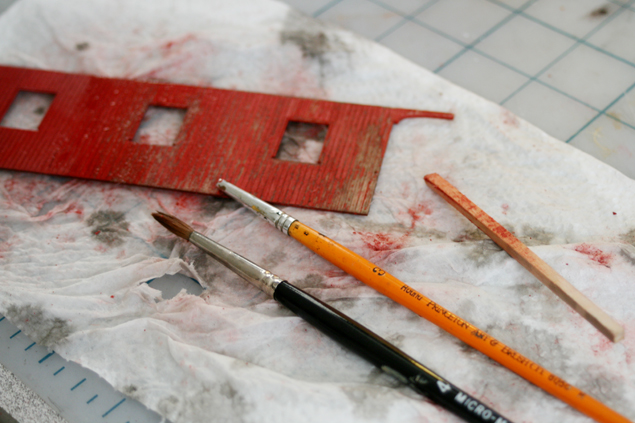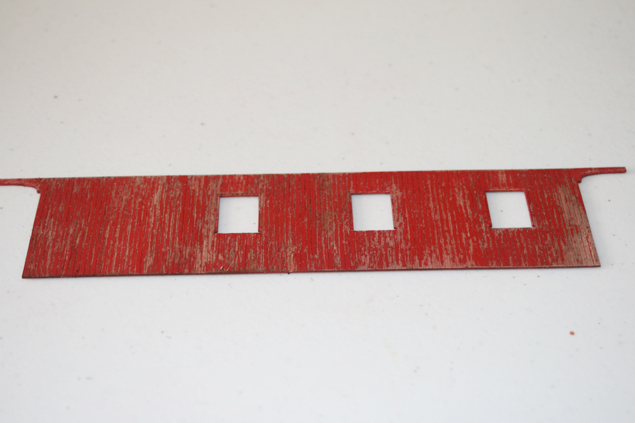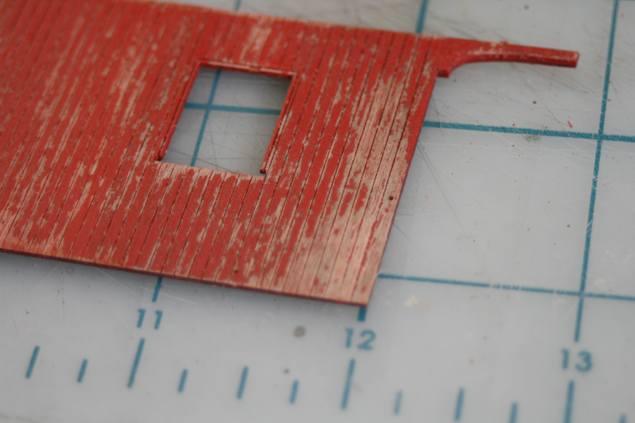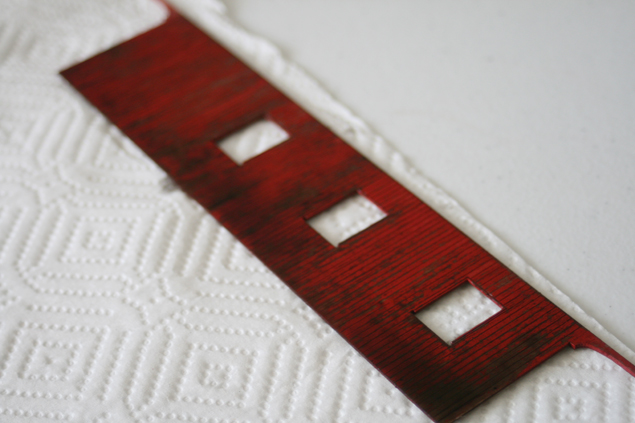As modelers, we are always trying to recreate what Mother Nature has been perfecting for eons. In this case, how to give your wooden models the appearance of rain and sun damage.
When wood is left unprotected in the elements or uncared for, the paint begins to flake off and the wood rots. There are many ways to accomplish this effect such as rubber cement, masking tape or hair spray. Both MIG and AK Interactive have chipping and worn effects, which have similar results as hairspray. For this article, I will take you through my steps to weather a caboose wall that has seen better days using hairspray.
Weathering the Bare Wood

This is important since we will be exposing the bare wood. I like to give the wood a very light sanding with fine-grit sandpaper. This will lightly roughen up the wood and give it some texture. Once that is complete, you can begin adding your stain. Using a wash of India Ink and water, brush a liberal amount of stain onto your model, vertically to simulate rain washing over the wood. I also distressed the wood even further to represent rotting wood is some locations.
Hairspray
Once you have the desired color of wood, begin spraying on your hairspray over the areas you are distressing and let it dry for 10 to 15 minutes. For me, I like to use cheap aerosol hairspray, however, you can use liquid hairspray applied from an airbrush.
Painting
After the hairspray is dry, you can spray or brush on your paint. For this article, I am using Micro Mark Caboose Red (made by Vallejo). I applied several coats letting each dry for about 5 minutes between each application. After your paint is applied, allow it to dry.

Chipping the Paint
Now for the fun part, removing the paint.

The tools are very simple; a cup of water, a soft brush to apply the water to your model, a stiff brush and a toothpick or stripwood from your scrap box to remove paint.

First, apply water to your painted model. Try to do little areas at a time to keep your wood from warping. Let the water sit for a few minutes and then you can begin scratching the paint with your stiff brush or toothpick. The larger the tool to remove the paint, the larger the area that will be affected. Use your toothpick for finer detail work

Be sure to keep the area wet so the water can loosen up the hairspray. As you can see in the photo above, the paint is beginning to come off.

Keep wetting the next area and scraping until you have the desired effect you are wanting to model.
Once I am done, I use the wet brush to wash off any access paint and uses a paper cloth to wipe and rub it clean.


Finishing it Up
Now that I have the desired effect I like to add a final India Ink wash to the entire model to blend it. I also add a little more wash in some areas where the wood is starting to rot.

The final results are very realistic.



Shawn, how about on brass boxcars…. Ideas?!
LikeLike
I have been thinking about that as well as plastic. This technique can be used on just about any material. For example, https://shortlinemodelers.com/2019/05/13/weathering-tin-sheeting/ here is how I add peeling paint effects to tin. Military modelers also use this for plastic and brass. If the brass or plastic car is wood, I would paint it to look like weathered wood. Then follow the steps above. It may take some practice but it will work.
LikeLike
Shawn, I have had good results using hairspray on brass. Here is my process:
1 Spray on the color you wish to reveal [wait a day]
2. seal with glosscoat and let dry a day
3. apply hairspray with a qtip
4 airbrush car color
5 wait 5-10 minutes then scrape glossed area with scribe to chip paint. I have a German made tool i got from PBL.
LikeLike
That’s great. I would love to see how it turned out.
LikeLike